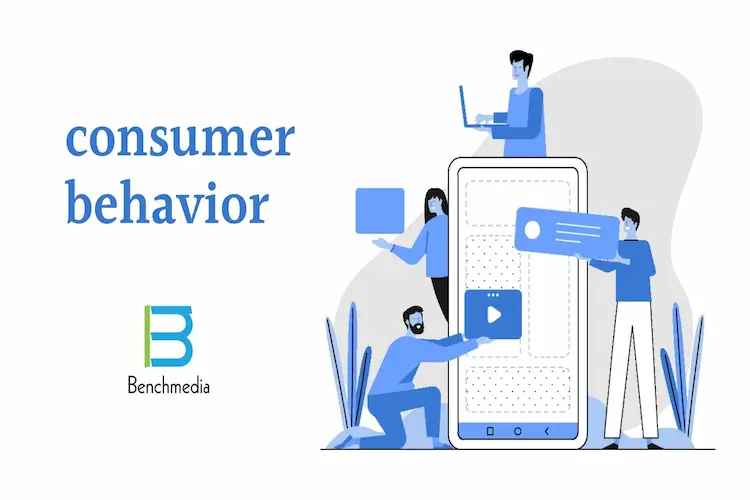The Consumer Behavior Journey in the Digital Marketing encompasses the evolution of consumer preferences, decision-making, and interactions with brands in the digital landscape.
It involves understanding how consumers navigate through various online channels, engage with content, and make purchasing decisions.
This journey is influenced by factors such as social media, online reviews, personalized advertisements, and user- generated content.
Marketers must analyze consumer behavior data to tailor their digital marketing strategies effectively. By identifying consumer needs, preferences, and pain points.
marketers can create targeted campaigns that resonate with their audience and drive engagement and conversions.
How can I link between consumer behavior and digital marketing?
here is how digital marketing affects consumer behaviour and how Data Collection and Analysis: Digital marketing relies heavily on data, and consumer behavior data is crucial for creating effective marketing strategies.
By analyzing consumer behavior, marketers can understand what products or services consumers are interested in, what their purchasing patterns are, and what influences their buying decisions.
This data can be collected through various digital channels such as social media, websites, and email.
Personalization: Understanding consumer behavior allows marketers to personalize their digital marketing efforts. By tailoring content and offers to specific consumer preferences, marketers can increase engagement and conversions.
For example, if a consumer frequently purchases running shoes, a digital marketer can send them targeted ads or emails about new running shoe releases or running events.
Targeting: Digital marketing allows for precise targeting based on consumer behavior. For instance, if a consumer has been searching for information about a particular product or service, digital marketers can target them with ads related to that product or service.
This increases the likelihood of conversion since the consumer is already interested in the product or service.
Feedback Loop: The digital nature of marketing allows for immediate feedback from consumers. Marketers can track consumer behavior in real-time and make adjustments to their marketing strategies accordingly.
For example, if a particular ad is not performing well, marketers can quickly replace it with a different one.
Consumer Engagement: Digital marketing provides various platforms for consumer engagement, such as social media, online forums, and blogs.
Marketers can use these platforms to interact with consumers, answer their questions, and address their concerns. This engagement can help build brand loyalty and trust.
Explore the new dimensions of consumer behavior in the digital marketing
- The ever-evolving landscape of digital marketing is reshaping consumer behavior, with an increasing emphasis on personalized experiences and engagement across multiple channels.
- As consumers become more digitally savvy, marketers must adapt their strategies to align with changing preferences and behaviors, leveraging data-driven insights to create targeted and effective campaigns.
- The digital marketing era has ushered in a new era of consumer behavior, characterized by a desire for seamless and integrated experiences across various touchpoints, driving the need for marketers to adopt a holistic approach to engagement.
What really drives us to make a purchase?
There are several factors that can drive us to make a purchase. Here are a few:
Need or Desire for a Product or Service: This is the most fundamental driver. If we need something, such as food, clothing, or shelter, we are likely to purchase it.
Similarly, if we desire something, such as a luxury item or a new gadget, we may also be driven to make a purchase.
Perceived Value: Consumers are more likely to make a purchase if they perceive that the product or service offers good value for money. This can include factors such as quality, functionality, and price.
Emotions: Emotions can play a significant role in driving us to make a purchase. For example, we may be driven to make a purchase because we feel happy, excited, or even sad.
Marketers often use emotional appeals in their advertising to tap into these emotions and drive sales.
Social Influence: Our purchasing decisions can also be influenced by our social networks. For example, we may be more likely to purchase a product or service if our friends or family members recommend it to us.
Convenience: Convenience is another factor that can drive us to make a purchase. For example, we may be more likely to purchase a product or service if it is easy to find, purchase, and use.
Brand Loyalty: If we have a positive experience with a brand, we may be more likely to purchase from that brand again in the future.
This can be driven by factors such as brand reputation, customer service, and product quality.
Overall, there are many factors that can drive us to make a purchase, and these factors can vary depending on the individual and the situation. Marketers can use a variety of strategies to tap into these factors and drive sales.
you can have afree quoat with our team in benchmedia to guide you to understand consumer behavior in your marketing strategies.




